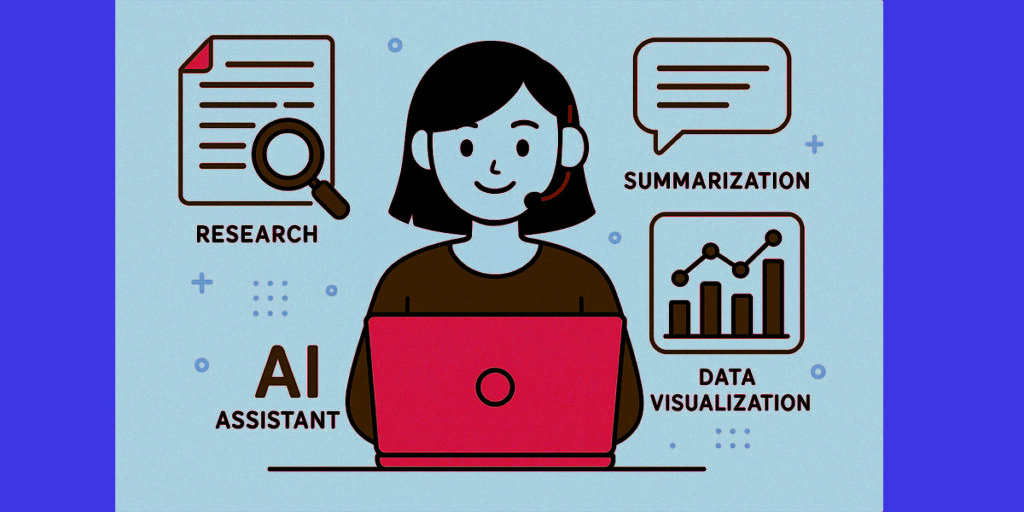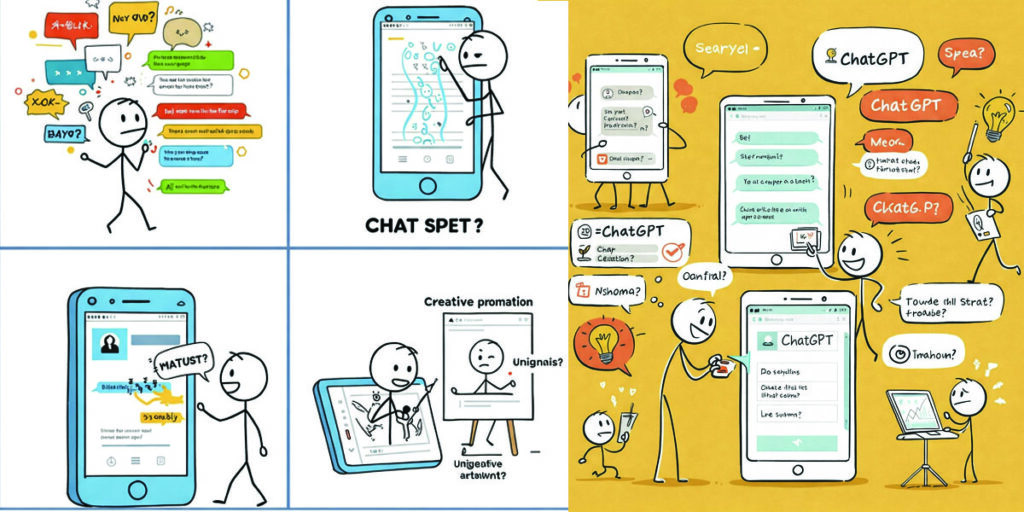AI assistant for research insights, summarization, and data visualization.
The exponential growth of data and the escalating demand for rapid, insightful analysis have made sophisticated Artificial Intelligence (AI) tools essential. Descry AI, a meticulously designed intelligent assistant, stands out by providing researchers, economists, and network analysts with unparalleled capabilities in research insights, summarization, and data visualization. Understanding Descry AI’s transformative power requires exploring its historical development, the intricate relationship between AI and economic markets, and its impact on networking and collaboration.
A Historical Tapestry: The Genesis of Intelligent Assistance
The journey towards intelligent assistants like Descry AI is deeply rooted in the decades-long evolution of artificial intelligence and computer science. The seeds of AI were sown in the mid-20th century, with early pioneers envisioning machines capable of mimicking human cognitive functions. The Dartmouth Workshop in 1956 is often considered the formal birth of AI as a field, sparking initial optimism and research into areas like symbolic reasoning and problem-solving.
The subsequent decades witnessed periods of both fervent progress and disillusionment, often referred to as “AI winters.” Early AI systems faced limitations in processing power and access to large datasets, hindering their ability to tackle complex real-world problems. However, the late 20th and early 21st centuries heralded a resurgence of AI, fueled by advancements in computing power, the proliferation of data, and breakthroughs in machine learning algorithms.
The rise of the internet and the digital revolution generated unprecedented volumes of information, creating both opportunities and challenges for knowledge workers. Researchers and analysts found themselves grappling with information overload, spending significant time sifting through vast repositories of data to extract meaningful insights. This burgeoning need for efficient information processing and analysis laid the groundwork for the development of intelligent tools capable of augmenting human cognitive capabilities.
Natural Language Processing (NLP), a subfield of AI focused on enabling computers to understand and process human language, played a pivotal role in the evolution of AI assistants. Early NLP techniques focused on rule-based systems and statistical methods. However, the advent of deep learning in the 2010s revolutionized NLP, leading to the development of sophisticated models capable of understanding context, nuances, and even generating human-like text. This breakthrough was crucial for creating AI assistants that could effectively summarize complex documents and extract relevant information.
Similarly, the field of data visualization has evolved significantly. Initially relying on manual charting and statistical software, the process of transforming raw data into meaningful visual representations was often time-consuming and required specialized skills. The integration of AI into data visualization tools has automated many aspects of this process, enabling users to create compelling and insightful visualizations with greater ease and speed.
The convergence of advancements in NLP, machine learning, and data visualization, coupled with the ever-growing need for efficient knowledge extraction, ultimately paved the way for the emergence of sophisticated AI assistants like Descry AI. These tools represent the culmination of decades of research and development, offering a powerful synergy of capabilities to address the challenges of navigating the modern information landscape.
Descry AI and the Economic Market: A Catalyst for Informed Decision-Making
The economic market, with its intricate web of interconnected factors, vast datasets, and constant flux, presents a formidable challenge for analysts and decision-makers. Descry AI offers a suite of powerful tools that can significantly enhance economic research and market analysis, providing a crucial edge in this dynamic environment.
Research Insights: Economic research often involves sifting through a multitude of reports, academic papers, news articles, and statistical databases. Descry AI can automate the process of identifying and extracting key insights from these diverse sources. By employing advanced NLP techniques, it can understand the context of economic discussions, identify relevant trends, and synthesize information from disparate sources into a cohesive overview. For instance, when researching the impact of interest rate hikes on consumer spending, Descry AI can analyze central bank reports, economic indicators, and market sentiment analysis to provide a comprehensive understanding of the potential effects.
Summarization: Economic reports and research papers can be lengthy and complex. Descry AI’s summarization capabilities allow economists to quickly grasp the core findings and arguments of these documents. It can generate concise and accurate summaries, highlighting key data points, methodologies, and conclusions. This can significantly reduce the time spent on initial information gathering, allowing analysts to focus on deeper analysis and interpretation. Imagine an economist needing to understand the key takeaways from a 100-page report on global supply chain disruptions. Descry AI can generate a succinct summary outlining the major findings, affected sectors, and potential policy implications within minutes.
Data Visualization: Economic data, ranging from GDP growth rates to inflation figures and unemployment statistics, is often complex and requires effective visualization to identify patterns and trends. Descry AI can automate the creation of insightful charts, graphs, and dashboards from raw economic data. It can suggest appropriate visualization techniques based on the data type and the questions being asked, enabling economists to communicate their findings more effectively and identify crucial relationships that might be obscured in tabular data. For example, Descry AI can transform raw trade data between countries into an interactive map highlighting key trading partners and shifts in import-export balances over time.
Furthermore, Descry AI can assist in forecasting economic trends by analyzing historical data and identifying patterns. While not a crystal ball, its ability to process large datasets and apply statistical models can provide valuable insights into potential future scenarios. This can be particularly useful for businesses making investment decisions or policymakers formulating economic strategies.
The integration of Descry AI into economic analysis can lead to more informed decision-making, reduced research time, and a deeper understanding of complex market dynamics. By augmenting the capabilities of human analysts, it empowers them to focus on higher-level strategic thinking and the development of innovative solutions.
Networking in the Age of AI: Connecting Minds and Ideas
In today’s interconnected world, effective networking is crucial for researchers, economists, and professionals across all disciplines. Descry AI can play a significant role in enhancing networking efforts by facilitating the discovery of relevant connections, identifying potential collaborators, and streamlining communication.
Identifying Experts and Collaborators: Research often benefits from interdisciplinary collaboration. Descry AI can analyze research publications, conference proceedings, and professional profiles to identify experts in specific fields or those working on related topics. By understanding the research interests and expertise of individuals, it can suggest potential collaborators for projects, fostering the exchange of ideas and accelerating the pace of discovery. For instance, a researcher studying the economic impact of climate change might use Descry AI to identify climate scientists and economists with overlapping research interests.
Understanding Research Landscapes: Before embarking on a new research project, it is essential to understand the existing body of work and identify potential gaps. Descry AI can analyze large volumes of research papers to map out the current research landscape in a specific area. It can identify key research themes, prominent authors, and influential publications, helping researchers to position their work within the broader context and avoid unnecessary duplication of effort.
Facilitating Knowledge Sharing: Descry AI can assist in the dissemination of research findings and the sharing of knowledge within networks. It can summarize research papers for broader audiences, highlight key findings on social media, and even assist in drafting compelling research proposals. By making research more accessible and understandable, it can foster greater engagement and collaboration within the scientific community.
Analyzing Network Structures: For economists studying market dynamics or social scientists analyzing social interactions, understanding network structures is crucial. Descry AI can analyze network data, such as co-authorship networks or trade relationships, to identify key players, influential nodes, and patterns of interaction. This can provide valuable insights into the flow of information, the formation of alliances, and the spread of economic shocks.
Personalized Recommendations: Based on a user’s research interests, professional affiliations, and past interactions, Descry AI can provide personalized recommendations for relevant conferences, workshops, and networking events. This can help individuals to expand their professional network and stay abreast of the latest developments in their field.
By leveraging the power of AI, Descry AI transforms networking from a potentially time-consuming and serendipitous process into a more efficient and targeted endeavor. It empowers individuals to build meaningful connections, foster collaboration, and stay at the forefront of their respective fields.
The Symbiotic Future: Human Intelligence Augmented by AI
Descry AI is not intended to replace human researchers, economists, or network analysts. Instead, it acts as a powerful augmentation tool, enhancing their capabilities and freeing them from the more tedious and time-consuming aspects of their work. By automating information gathering, summarization, and visualization, Descry AI allows human experts to focus on higher-level tasks such as critical thinking, interpretation, and the formulation of innovative solutions.
The future of research, economic analysis, and networking will likely be characterized by a symbiotic relationship between human intelligence and AI. Tools like Descry AI will become increasingly integrated into workflows, providing seamless access to information, facilitating collaboration, and ultimately accelerating the pace of discovery and innovation.
Navigating the Ethical Landscape:
As AI tools become more powerful and pervasive, it is crucial to consider the ethical implications of their use. Issues such as data privacy, algorithmic bias, and the potential for misuse must be carefully addressed. Developers and users of AI assistants like Descry AI must prioritize transparency, accountability, and fairness to ensure that these technologies are used responsibly and for the benefit of society.
Descry AI – A Beacon of Intelligent Empowerment
Descry AI represents a significant step forward in the evolution of intelligent assistance for researchers, economists, and network analysts. By seamlessly integrating powerful capabilities in research insights, summarization, and data visualization, it empowers users to navigate the complexities of the modern information landscape with greater efficiency and effectiveness. Rooted in decades of AI research and driven by the ever-increasing demands of a data-rich world, Descry AI stands as a testament to the transformative potential of artificial intelligence in augmenting human intellect and fostering collaboration. As AI continues to evolve, tools like Descry AI will undoubtedly play an increasingly vital role in shaping the future of research, economic markets, and the interconnected fabric of our global network. Its ability to illuminate insights, condense knowledge, and visualize complex data positions it as a crucial asset for anyone seeking to make sense of and thrive in an increasingly complex world. The history of AI has led us to this point, and the future promises even more sophisticated and integrated tools that will continue to redefine the boundaries of human potential.




















